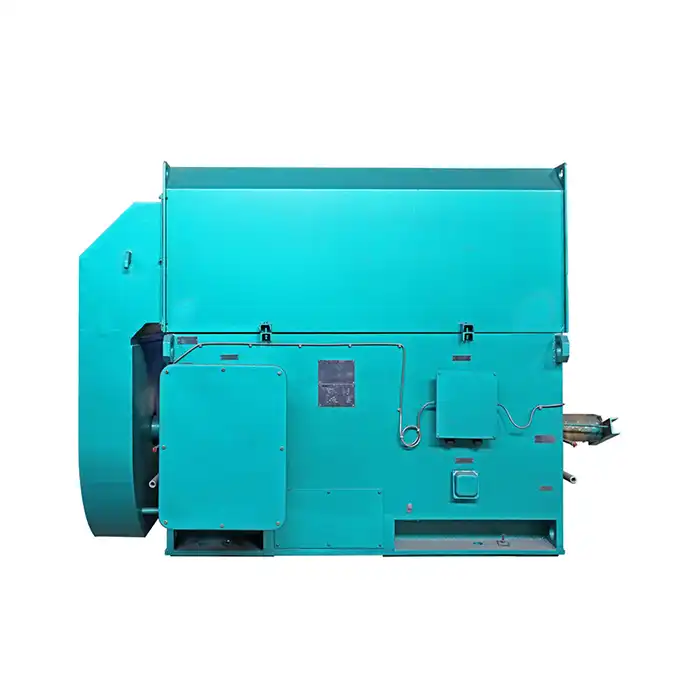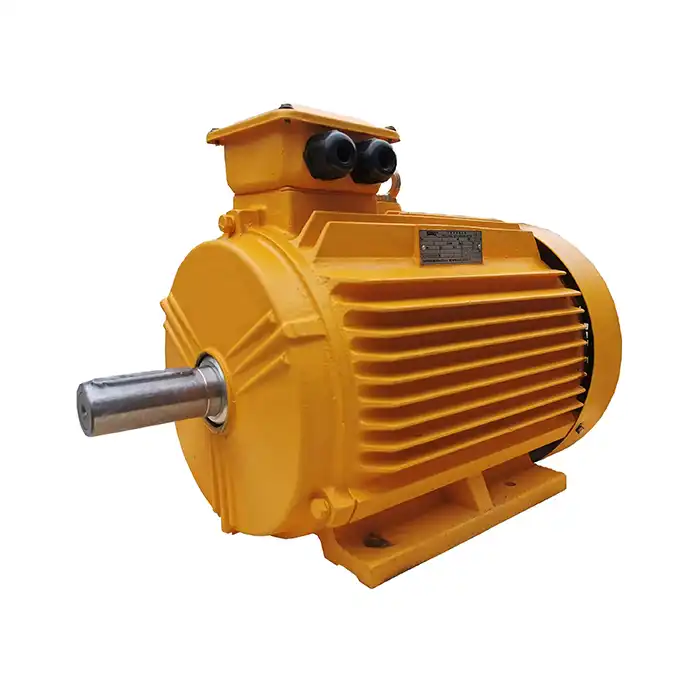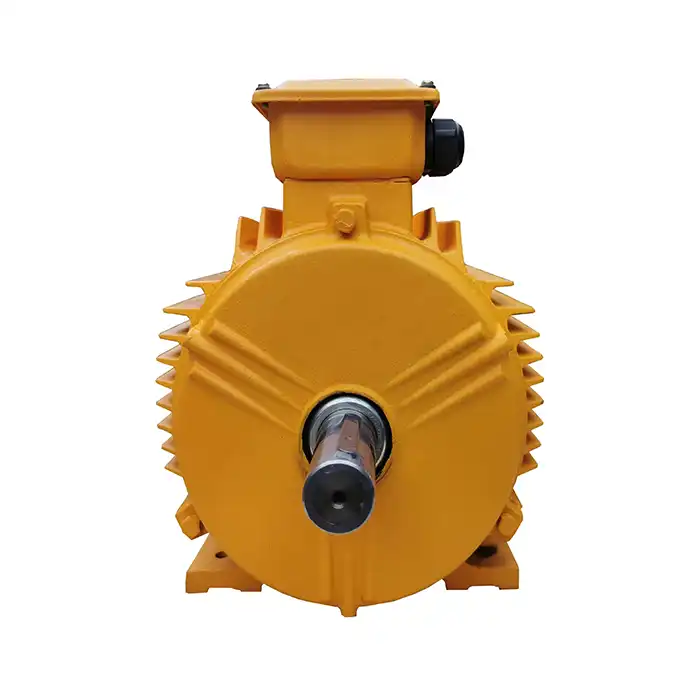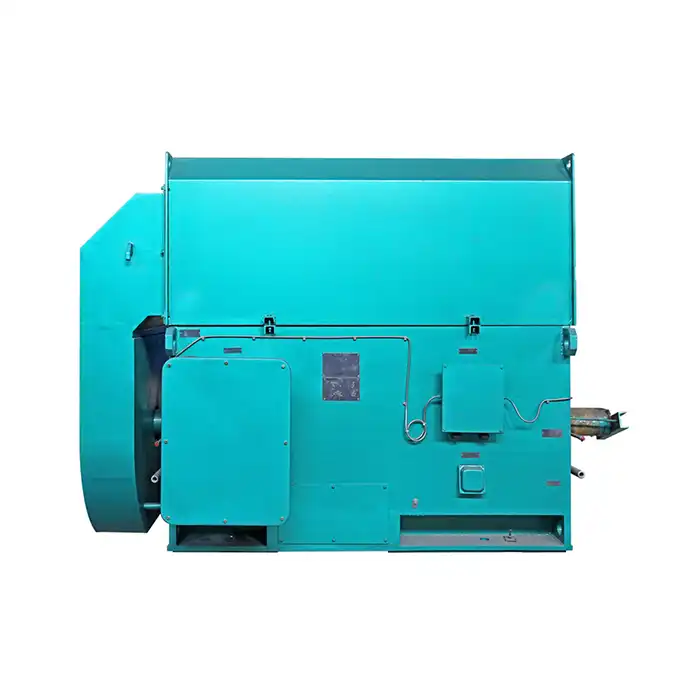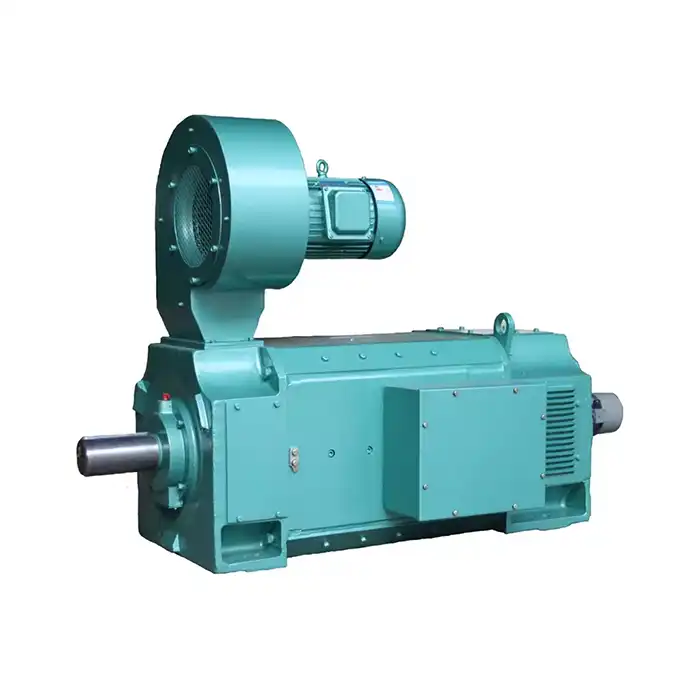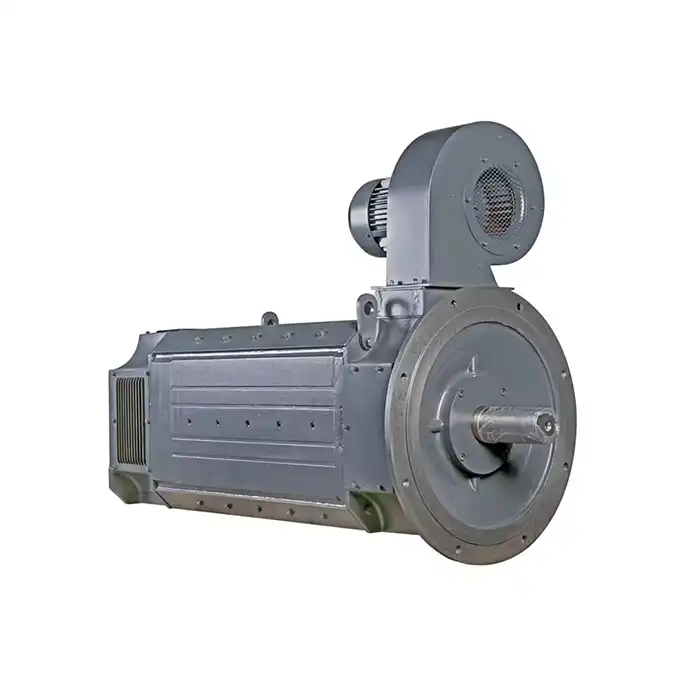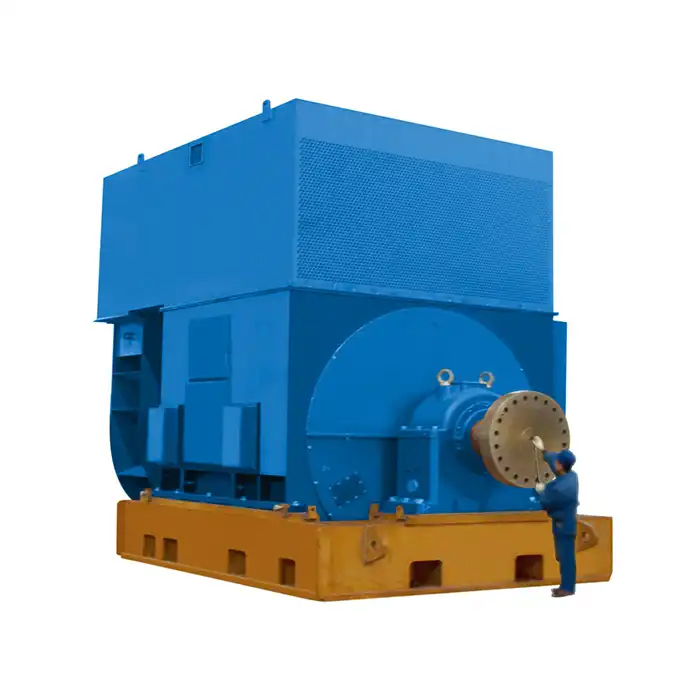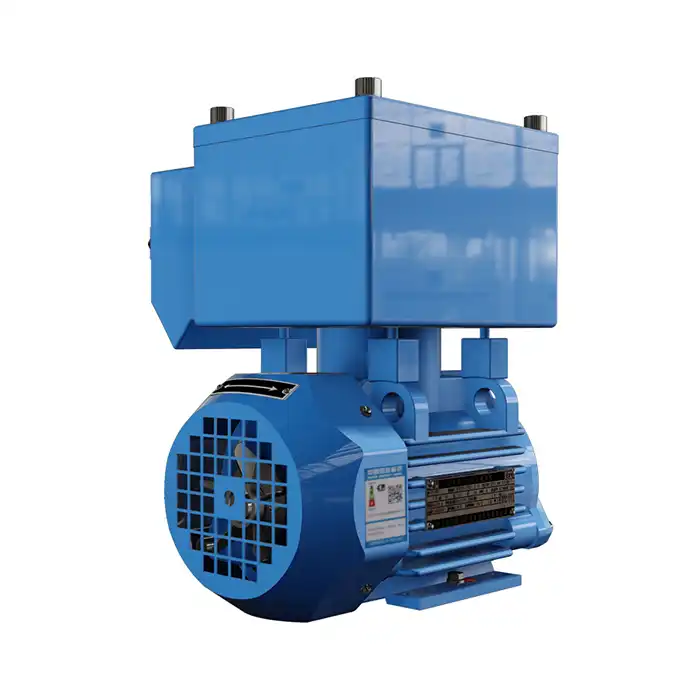Mining Industry-Specific Requirements for Explosion Proof AC Motor Selection
In the mining industry, safety is paramount. The selection of appropriate equipment, particularly explosion proof AC motors, plays a crucial role in ensuring operational safety and efficiency. This article delves into the specific requirements for selecting explosion proof AC motors in mining applications, focusing on certification standards, dust ignition protection, and high-altitude considerations.
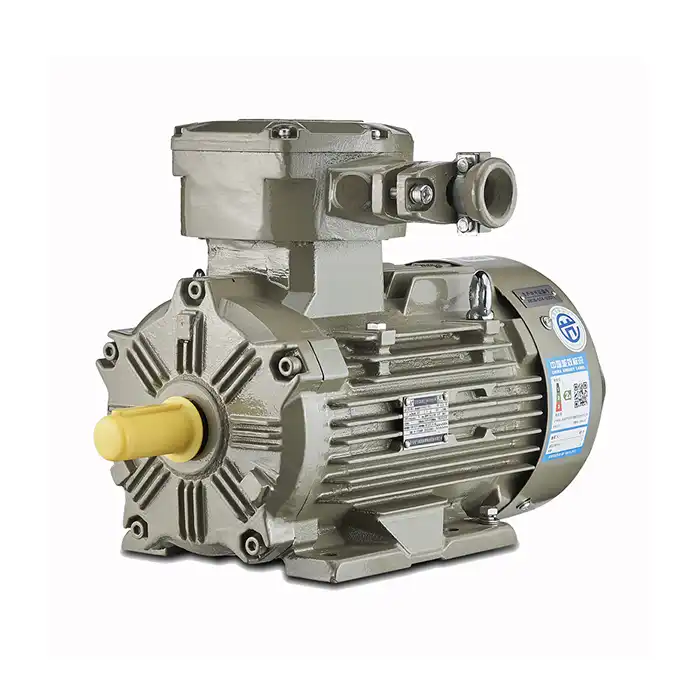
YBX3 Product Specifications:
| Power range: | 0.55 kW to 630 kW |
| Voltage: | 380V, 400V, 415V, 660V, 1140V (customizable) |
| Frequency: | 50Hz |
| Poles: | 2, 4, 6, 8 |
| Protection class: | IP55, IP56, IP65 |
| Insulation class: | F or H |
When it comes to explosion proof AC motors in mining, two major certification standards stand out: MSHA (Mine Safety and Health Administration) in the United States and ATEX (Atmosphères Explosibles) in the European Union. Understanding these standards is essential for selecting the right motor for your mining operation.
MSHA Certification
MSHA certification is specifically designed for equipment used in U.S. mining operations. It focuses on ensuring that equipment can operate safely in potentially explosive atmospheres found in mines. MSHA-certified motors undergo rigorous testing to verify their ability to contain internal explosions and prevent the ignition of surrounding flammable gases or dust.
ATEX Certification
ATEX certification, on the other hand, is a broader standard that applies to equipment used in any potentially explosive atmosphere, not just mining. ATEX-certified explosion proof AC motors are categorized based on the type of hazardous environment they can safely operate in, including gas and dust atmospheres.
Key Differences
While both standards aim to ensure safety in hazardous environments, they have some notable differences:
- Scope: MSHA is specific to mining, while ATEX covers a broader range of industries.
- Testing procedures: MSHA and ATEX have different testing protocols and requirements.
- Categorization: ATEX uses a more detailed categorization system for different types of hazardous environments.
When selecting an explosion proof AC motor for mining applications, it's crucial to consider which standard is applicable in your region and ensure compliance with local regulations.
Dust Ignition Protection (DIP) Ratings for Underground Mining Motors
In underground mining environments, dust poses a significant explosion risk. Dust Ignition Protection (DIP) ratings are crucial when selecting explosion proof AC motors for these applications.
Understanding DIP Ratings
DIP ratings indicate a motor's ability to prevent the ignition of combustible dust. These ratings are typically expressed as "Ex t" followed by a letter indicating the level of protection:
- Ex ta: Very high protection level, suitable for Zone 20 (areas where explosive dust atmosphere is present continuously)
- Ex tb: High protection level, suitable for Zone 21 (areas where explosive dust atmosphere is likely to occur in normal operation)
- Ex tc: Enhanced protection level, suitable for Zone 22 (areas where explosive dust atmosphere is not likely to occur in normal operation)
Importance in Underground Mining
In underground mining, where coal dust and other combustible particles are prevalent, selecting a motor with the appropriate DIP rating is critical. Motors with higher DIP ratings offer enhanced protection against dust ingress and potential ignition sources, reducing the risk of dust explosions in these hazardous environments.
Considerations for Motor Selection
When choosing an explosion proof AC motor for underground mining applications, consider the following factors related to DIP ratings:
- Dust concentration in the operating environment
- Type of dust (e.g., coal, metallic, organic)
- Frequency of dust presence
- Potential for dust accumulation on motor surfaces
By carefully evaluating these factors and selecting a motor with the appropriate DIP rating, mining operations can significantly enhance safety and reduce the risk of dust-related explosions.
High-Altitude Considerations for XP Motor Performance in Mining Operations
Mining operations often occur at high altitudes, which can impact the performance of explosion proof AC motors. Understanding and accounting for these altitude-related factors is crucial for ensuring optimal motor performance and safety.
Effects of High Altitude on Motor Performance
As altitude increases, air density decreases. This change in air density can affect explosion proof AC motors in several ways:
- Reduced cooling efficiency due to thinner air
- Decreased dielectric strength of air, potentially affecting insulation properties
- Altered pressure differential in sealed components
Derating Factors
To account for these altitude-related effects, explosion proof AC motors often require derating when operated at high altitudes. Derating involves reducing the motor's output power to prevent overheating and ensure safe operation. The specific derating factor depends on the altitude and the motor's design.
Selecting Motors for High-Altitude Mining
When choosing explosion proof AC motors for high-altitude mining operations, consider the following:
- Altitude-specific motor designs: Some manufacturers offer motors specifically designed for high-altitude operation, eliminating the need for significant derating.
- Enhanced cooling systems: Motors with more efficient cooling systems may perform better at high altitudes.
- Insulation class: Higher insulation classes (e.g., Class H) may be necessary to withstand the increased thermal stress at high altitudes.
- Seal design: Ensure that motor seals are designed to maintain their integrity under reduced atmospheric pressure.
By taking these high-altitude considerations into account, mining operations can select explosion proof AC motors that will perform reliably and safely in challenging high-altitude environments.
Importance of Proper Motor Sizing
In high-altitude mining applications, proper motor sizing becomes even more critical. Oversizing motors to compensate for altitude effects can lead to inefficient operation and increased energy costs. Conversely, undersizing can result in overheating and reduced motor life. Working closely with motor manufacturers or experienced engineers can help ensure the selection of appropriately sized explosion proof AC motors for high-altitude mining operations.
Conclusion
Selecting the right explosion proof AC motor for mining applications requires careful consideration of various factors, including certification standards, dust ignition protection ratings, and high-altitude performance considerations. By understanding these requirements and working with reputable manufacturers, mining operations can ensure the safety, reliability, and efficiency of their motor-driven equipment.
At Shaanxi Qihe Xicheng Electromechanical Equipment Co., Ltd., we specialize in providing high-quality power equipment solutions tailored to the unique needs of the mining industry. Our explosion proof AC motors are designed to meet the stringent safety requirements of mining environments while delivering exceptional performance and energy efficiency. Whether you're operating in underground mines, processing facilities, or high-altitude locations, our team of experts can help you select the ideal motor for your specific application.
If you're looking for reliable, efficient, and safe explosion proof AC motors for your mining operation, we're here to help. Our commitment to customer satisfaction extends from pre-sales consultation to after-sales support and technical assistance. To learn more about our explosion proof AC motors and how they can benefit your mining operation, please contact us at xcmotors@163.com. Let us help you power your mining operation safely and efficiently.
References
1. Johnson, R. (2021). Explosion Proof Motors in Mining: A Comprehensive Guide to Safety Standards and Selection Criteria. Mining Safety Journal, 45(3), 78-92.
2. Smith, A. & Brown, T. (2020). Comparative Analysis of MSHA and ATEX Certification Requirements for Explosion Proof Equipment. International Journal of Mining Engineering, 32(2), 145-160.
3. Lee, S. et al. (2022). Dust Ignition Protection in Underground Coal Mining: Advancements in Motor Design and Safety Features. Coal Mining Technology Review, 18(4), 201-215.
4. Garcia, M. & Rodriguez, L. (2019). High-Altitude Performance of Explosion Proof Motors in South American Mining Operations. Journal of Mining Equipment and Electrotechnology, 27(1), 55-70.
5. Wilson, D. (2023). Optimizing Motor Selection for Energy Efficiency in Modern Mining Applications. Energy Efficiency in Mining Operations, 9(2), 112-128.
6. Chen, H. & Zhang, Y. (2022). Advancements in Explosion Proof Motor Technology for Harsh Mining Environments. Mining Equipment and Systems, 14(3), 180-195.



